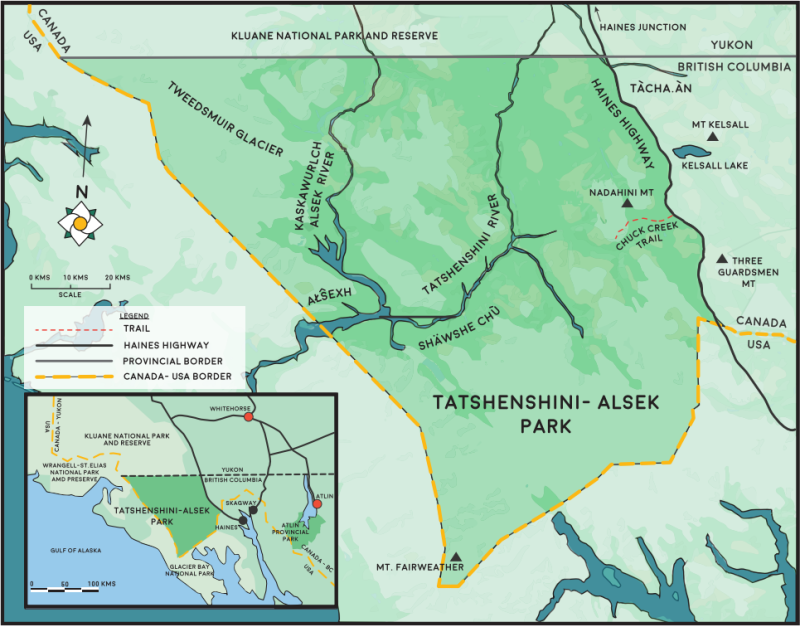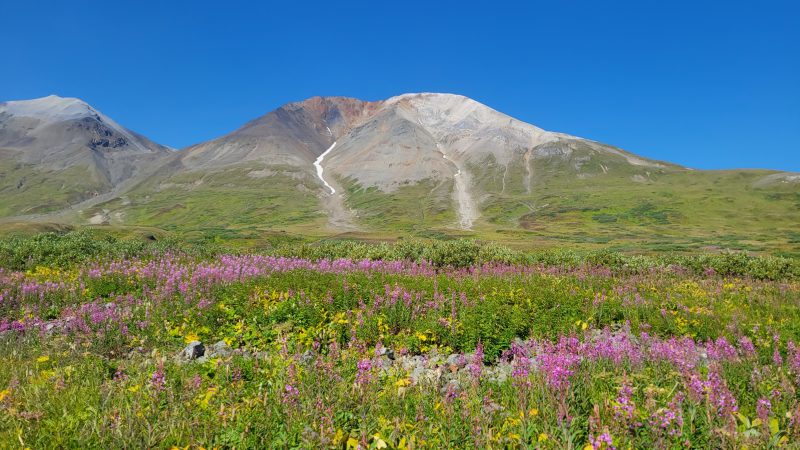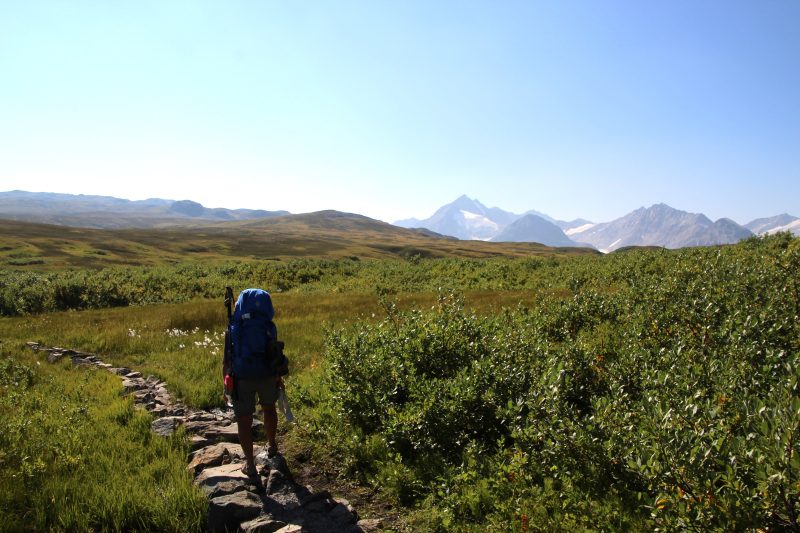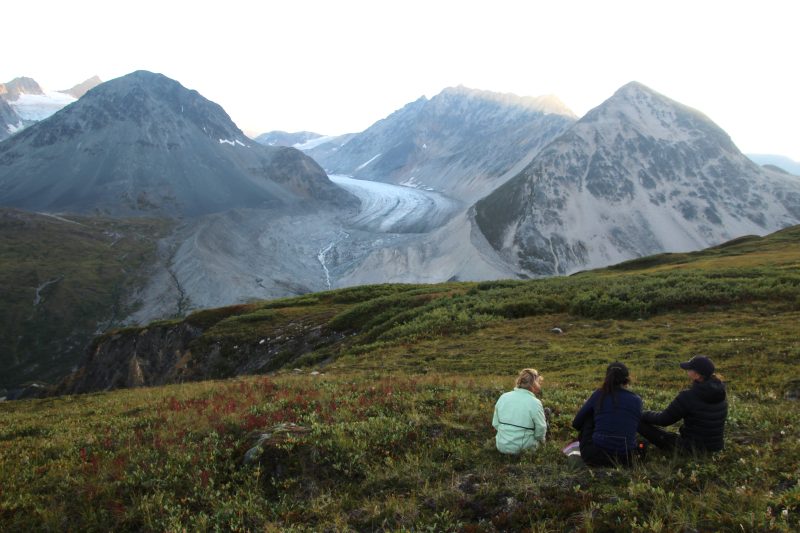Exploring the Chuck Creek Trail at Tatshenshini-Alsek Park
Categories:

It was a beautiful Wednesday morning with the heat of the end-of-summer sun still radiating through the windows of our packed ranger trucks. As we drove south on the Haines Highway there were endless sights for our eyes to feast upon.
The Haines Highway crosses provincial, territorial, and international borders. Starting in the Yukon at Haines Junction, one sees the stunning views of the southern portion of Kluane National Park. Next you travel through the most northwestern portion (approximately 75km of highway) of British Columbia with the incredible Tatshenshini-Alsek Provincial Park to the right. If continuing south, the highway ends at the seaside community of Haines, Alaska. Tatshenshini-Alsek is one of B.C.’s largest provincial parks; it borders Kluane National Park in the Yukon and Glacier Bay National Park/Wrangell-St. Elias Preserve in Alaska, making these four parks the largest internationally protected area in the world.
Tatshenshini-Alsek is well-known for its incredible river systems, glacier-capped peaks, diverse flora and fauna, and Mount Fairweather, B.C.’s tallest mountain. From rafting and kayaking, to hiking and mountaineering, Tatshenshini-Alsek offers amazing opportunities for outdoor enthusiasts to explore the rugged wilderness of the northwest.

Our destination was Samuel Glacier – accessed via The Chuck Creek Trail – one of the few trails accessible from the highway and the only trail maintained within the park. Arriving at the parking lot we donned our heavy backpacks, stopped to read the messages from previous hikers, and set off down the trail.
The trail is over 12km one way and winds through alpine terrain, past rugged mountains, and between colourful wildflowers. For several kilometres, Nadahini Mountain rises above to our right, and in the far distance towering peaks and glimpses of the Samuel Glacier come into view.

The trail is well maintained, especially after a recent project to upgrade it by improving sightlines, and preventing further braiding/widening. The area receives high precipitation and snow, and the clay-like substrate does not allow water to drain easily. The work was extensive, especially on the muddy wet spots. Reroutes, ditches, culverts, rock bridges/stepping stones, and gravel were added to reduce the muddy sections and keep the trail drier.
The Chuck Creek trail is remote, and some may wonder how supplies were brought onto the trail for this work. The more remote the park is, the trickier it can be! In this case, two main methods were used to “truck” in hundreds of pounds of gravel. In warmer months, some gravel needed to be flown in by helicopter, but a different option was available in the winter: the trail crew took six days to move dozens of bags of gravel in with sleds attached to snowmobiles. That is some incredible pre-planning, and highlights the logistical challenges associated with trail work.

As the trail wound on, we got closer to Samuel Glacier with each step. The final push was to navigate across a substantial water crossing – the park website’s suggestion to bring hiking sandals is a worthwhile recommendation to consider. As we climbed up the final rise, the view was stunning – rugged mountain peaks stretched out before us as far as the eye could see. And Samuel Glacier was front and centre. We had arrived!
With tents pitched and dinner enjoyed, we watched in awe as the sun set behind the mountains. It was quiet and calm, and feeling that deep connection to nature was impactful – I was sitting in the heart of Tatshenshini-Alsek Park. As I reflected on the day’s adventure, I was impressed by the trail crew’s hard work and dedication.. Having access to B.C.’s wild spaces is such a privilege, and the Chuck Creek Trail is one not to be missed.





